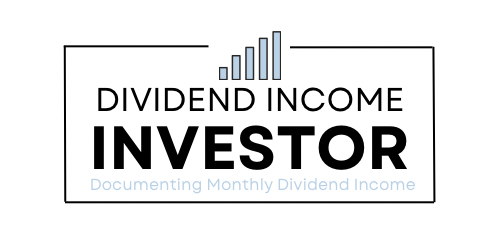Income streams for financial independence – 11 passive income generating streams with minimal participation after set up.
When looking for income streams for financial independence, to truly own your time, the income streams must be passive.
Once passive income streams generate more income than your expenses, you are an individual of independent means.
Going to a job becomes optional, because you can afford to look for something better.
Becoming more educated is optional, since you have the time, energy and income to pay for courses.
Starting an online business is possible, because you have the time, energy and income to try.
Everything in life becomes optional once multiple passive income streams cover your expenses.
Instead of being stuck at an unfulfilling job for 40 hours per week, and then commuting for another 10 hours, financial independence helps you gain more control over time.
So, what kind of income streams are best for financial independence?
Let’s dive in and take a look at the 11 best income streams for financial independence.
Best Income Streams for Financial Independence
As mentioned above, the best income streams for financial independence are passive income streams.
Therefore, the best income streams for financial independence require little to no participation to generate income.
So, this eliminates active income streams and side hustles such as driving for Uber, delivery, selling online, and most personal businesses. Even for blogging, this excludes income opportunities such as link inserts and sponsored posts, because of the work required to earn the income.
Conversely, the type of income streams that work for financial independence require minimal participation and a simple initial set up. Then, cash flow payments will continue for years regardless of involvement.
Here are the 11 best income streams for financial independence:

1. Dividend Stocks
Of course, I had to include dividend stocks on this list, because dividend investing is my main investment strategy. Chronicling monthly dividend income updates is also the foundation of this blog.
And frankly, dividend investing is probably the easiest way to build an income stream.
With some of the alternative income streams on this list, the initial set up is much more costly and time consuming. However, with dividend investing, you can start with a small sum of money ($500), and an application to open a brokerage account can be completed in less than 30 minutes.
Furthermore, investing in dividend stocks does not involve meetings or people. It’s a private way to generate cash flow from the comfort of your personal laptop or smartphone.
Yes, dividend investing does involve annual research and an initial set up, but if you select the best stocks for growth and dividend income, you get capital appreciation and a growing income stream for life.
Open an account through Questrade to get started with dividend investing. $50 in free trades is available here.

2. S&P 500 Index Fund
The most truly passive way to generate income and build wealth is probably an S&P 500 Index Fund.
In truth, if I wasn’t a dividend investor, I would most definitely be an index investor.
But because I like the predictability of dividend income and dividend raises, I prefer dividend investing.
Typically, index funds will pay out cash from trading, dividends, and interest to unit holders once per year.
And even if they don’t, an S&P 500 Index Fund will most definitely contribute to financial independence by providing between 7 to 10% annual growth.
According to Investopedia, investing in the S&P 500 over the most recent 20-year stretch (2000 to 2020), would have returned an average annual return of 8.1%. That would turn a $10,000 investment into $31,200.
A few S&P 500 Index Fund examples to look at are VOO, SPY, and VSP (CAD hedged).
3. REIT – Real Estate Investment Trusts
REIT stands for real estate investment trust.
A REIT is a company that owns, operates, or finances income-generating real estate.
Owning REITs is a great way to add a real estate component to an investor’s portfolio without acquiring a mortgage.
However, as this recent economic crisis has shown us, REITs may been in danger.
Many commercial REITs have taken a hit in recent years because of the move towards online shopping. But some commercial REITS have quality real estate locations, and residential real estate will always be needed.
I currently own Riocan (Ticker: REI.UN) and Choice Properties (CHP.UN). Another quality REIT to look at for income is Realty Income Corp (O).

4. ETF – Exchange Traded Funds that specialize in Monthly Income
An exchange traded fund (ETF) is a type of security that involves a collection of securities, and it usually follows an underlying asset.
For example, an ETF may follow the S&P 500, so ETFs and Index funds can overlap. Many ETFs are based on indices.
However, ETFs can also follow industries as well, such as a REIT ETF or financial services ETF.
There are also income-generating ETFs. To view a selection of income-generating ETFs, check out iShares by Blockrock’s “income” section here.
5. Mutual Fund – Income paying Mutual Funds are available
I used to work as a Mutual Fund Advisor for Royal Bank of Canada.
Back then, I would complete risk tolerance reviews and recommend mutual funds to clients. It was a pretty great job overall.
Anyways, mutual funds are similar to ETFs and index funds in that they are a collection of securities. But mutual funds are different because they can’t be traded, whereas I could buy and sell an ETF or index fund during a market session. However, with a mutual fund, you don’t know the price until the next day.
The other drawback to mutual funds is the MER (management expense ratio) fee.
But in my opinion, the MER is worth it if you are not willing to do the research on your own. With mutual funds, professional analysts manage your investments for you.
For someone that would avoid the stock market altogether out of fear, a 6% return annually after a 2% MER fee is still a higher return than a 1.5% GIC. So there is definitely value in mutual funds.
Also, there are income-generating mutual funds available. Since I used to be a mutual fund advisor at RBC, I will show you a few funds from RBC to check out:
- RBC Canadian Equity Income Fund – it is designed for investors that want a regular source of tax efficient income.
- RBC Canadian Dividend Fund – yes, dividend paying mutual funds exist too.
- PH&N Monthly Income Fund – designed for investors that seek consistent income monthly.
Please remember to talk to a financial advisor before investing.

6. High Interest Savings Account
Another overlooked option for income is a high interest savings account.
Some financial institutions such as Tangerine pay as high as 2.5% to hold money in an easy-to-access account.
Of course, a savings account does not pay high enough interest to become rich. But with enough savings, even a 1 to 2% interest rate can provide stable income.
7. GICs
Along with savings accounts, GICs are the probably the safest way to generate extra income.
For those that don’t know, GIC stands for guaranteed investment certificate.
In other words, your money is guaranteed.
But because there is no risk of loss, the return is much lower than most income streams on this list.
The other disadvantage of GICs is that non-redeemable GICs are not accessible until the maturity date. Once you invest in a non-redeemable GIC, you must wait until the maturity date to receive your money plus interest.
Nevertheless, GICs are a safe way to slowly generate income. They are great for retirees and those with a shorter timeframe before retirement.

8. Display Ads on a Blog or Website
Display ads are one of the easiest ways to monetize a blog or website.
To make money from display ads, you simply need to start a blog or website.
Then after approximately 6 months of consistent posting and building your site, you can apply for Google Adsense. Once you are approved, it is easy to download a plugin or enable auto ads to start generating passive income.
Alternatively, if your blog or website receives over 10,000 page views per month, you could apply for a higher paying ad network such as Monumetric. I recently switched from Google Adsense to Monumetric and have noticed a higher daily income since switching.
If your website receives over 10,000 page views per month you are interested in increasing your display ad income, I would recommend applying for Monumetric here.
9. Affiliate Marketing
Another great way to generate passive income from a blog or website is affiliate marketing.
By promoting products and services you personally endorse, you can receive commission.
If you can write a post that ranks in Google for a specific product or service, affiliate marketing can be an easy way to make money. But of course, there is some initial work involved, and it is not easy.
I currently have affiliate partnerships with Bluehost, Questrade, BizBudding, Amazon, and Fintel Connect. But I find it to be a more challenging way to make money compared to display ads.
This is because affiliate marketing does involve sales skills. Whereas with display ads, I can just focus on creating content.
With that said, affiliate marketing can be extremely lucrative once you figure it out. Some Bloggers earn 6 figures per month.
Check out my resource page to support my affiliates and help me become a full-time blogger.

10. Buy a Rental Property
If you read Rich Dad Poor Dad by Robert Kiwosaki, you will be familiar with this concept: the home you live in is not an asset. An asset pays you money.
So for real estate to be an income stream, it can’t be the home you live in because that costs you money. Owning a home is expensive. There is property tax, lawyer fees, maintenance, furniture costs, utility bills, and more.
But if you own a rental property that generates enough rental income to cover the mortgage, you have an income-generating asset.
Obviously, though, buying a rental property requires enough money to make a down payment.
So, rental properties as an income stream have one of the more difficult barriers to entry because of the upfront costs.
11. Royalties from a Product
Lastly, there is royalties from a product.
If you create a product that requires little work after it has been created, you have a passive income stream.
On a grander scale, actors and musicians receives royalties from shows, movies, and albums they made decades ago.
For a Blogger, creating an E-book and selling it on Amazon is a way to earn royalties.
Just a heads up, I will probably release an RTC product at some point in the future.
Final Thoughts
Even though this blog is focussed on building income streams through blogging and dividend investing, there are plenty of other passive income streams to consider.
If you are interested in real estate and are more handy, perhaps rental properties is a better income stream to consider.
Alternatively, if you enjoy analyzing stocks, dividend stocks may be a better fit.
Regardless of what your preference is, you should at least pick one income stream.
Then pay yourself first and continue building your chosen income stream(s) up until it generates more income than your expenses.
Even if you don’t want to retire early, at least your income streams will provide options.
In conclusion, the income streams covered in this post require minimal participation after an initial set up. Therefore, they are truly passive income, which makes them the best income streams for financial independence.
Moreover, the 11 best income streams for financial independence are the following:
- Dividend stocks
- S&P 500 Index Fund
- REITs
- ETFs
- Mutual Funds
- High Interest Savings Account
- GICs
- Display ads on a blog or website
- Affiliate marketing
- Rental properties
- Royalties from a product
Now I’d like to hear from you. What are your preferred income streams? How many of the above income streams are you getting paid from? I am currently earning income from 5 income streams other than my job: dividend stocks, REITs, high interest savings account, display ads, and affiliate marketing.
I am not a licensed investment or tax adviser. All opinions are my own. This post may contain advertisements by Monumetric and Google Adsense. This post may also contains internal links, affiliate links to BizBudding, Amazon, Bluehost, and Questrade, links to trusted external sites, and links to RTC social media accounts.
Connect with RTC
Twitter: @Reversethecrush
Pinterest: @reversethecrushblog
Instagram: @reversethecrush_
Facebook: @reversethecrushblog
Email: graham@reversethecrush.com


 Tools for Keyword Research: (9) Tools to Increase Organic Search Traffic
Tools for Keyword Research: (9) Tools to Increase Organic Search Traffic
